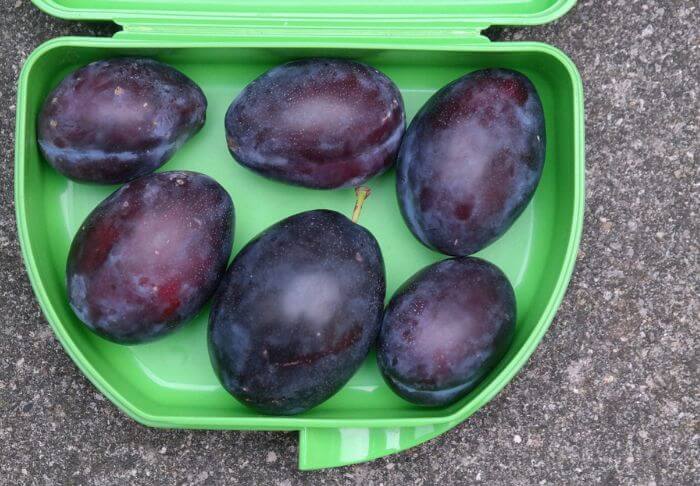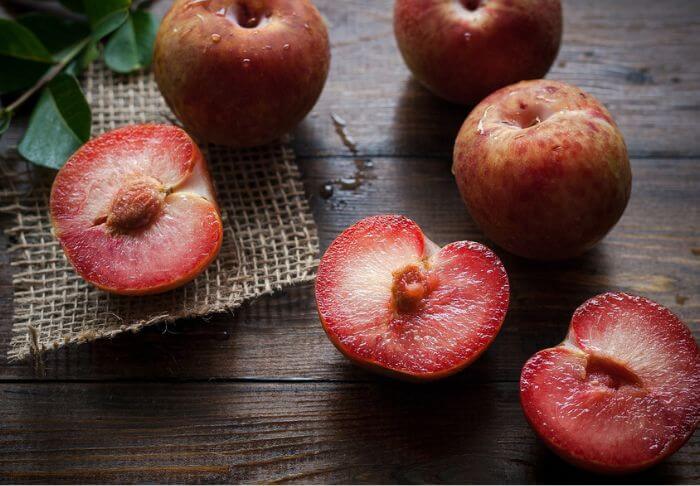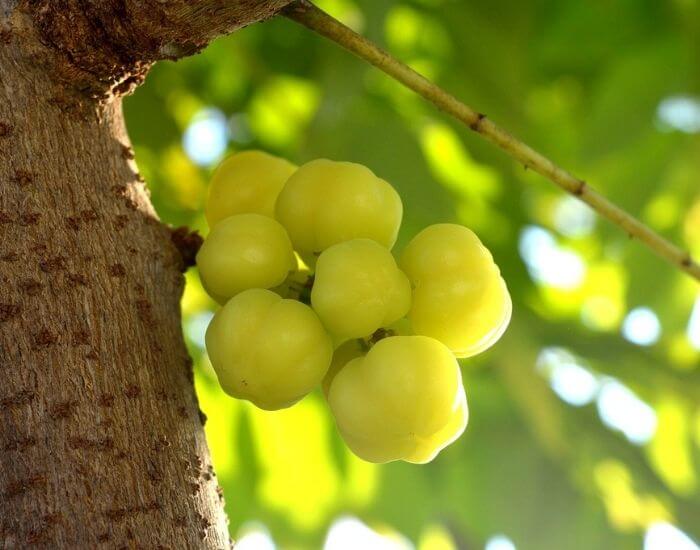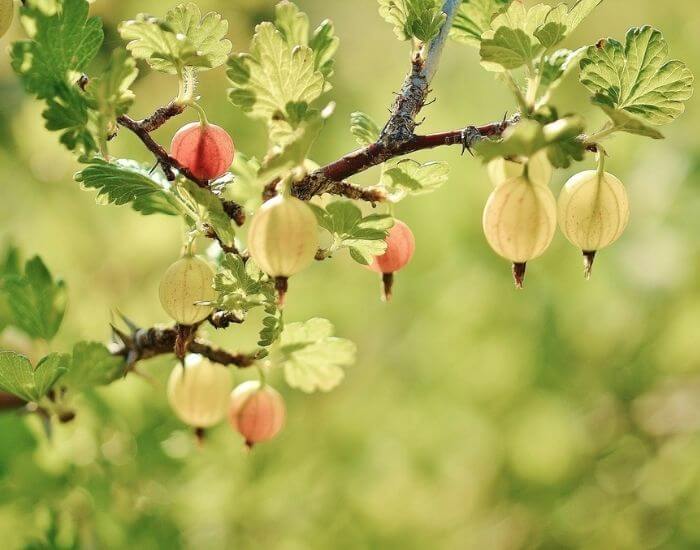Are you tired of the same old yellow-fleshed plums? Do you crave a burst of vibrant color and deep, rich flavor in your fruit?
If so, then get ready to explore the fascinating world of red-fleshed plums:
These lesser-known gems boast a striking crimson hue inside that is sure to captivate your senses and elevate your snacking experience.
From their distinct appearance to their unique taste and nutritional benefits, red-fleshed plums offer a delightful twist on this beloved stone fruit.
List of Plums that are red inside
1. Black Splendor Plum

The Black Splendor plum, with its deep purple-black skin and vibrant red flesh, is a true marvel of nature. Its striking appearance is matched only by its exquisite taste – juicy, sweet, and slightly tart, making it a delightful treat for the senses.
This unique variety of plum offers a burst of flavor that is both complex and satisfying, leaving an indelible impression on anyone fortunate enough to experience it.
What sets the Black Splendor plum apart is not just its stunning color or delicious flavor, but also its nutritional value.
Packed with vitamins, and fiber, this dark beauty provides a range of health benefits that contribute to overall well-being. It’s no wonder that the allure of the Black Splendor plum extends beyond its aesthetic appeal – it’s a powerhouse of nutrients disguised as an indulgent delight.
Whether enjoyed fresh as a snack or incorporated into culinary creations, the Black Splendor plum continues to captivate and inspire with its unparalleled splendor.
2. Elephant Heart plum

The Elephant Heart plum is a remarkable fruit with a deep burgundy skin and a rich, ruby-red interior that immediately captures the eye.
Its succulent flesh has an intense, sweet flavor with subtle hints of tartness, making it a unique and delightful addition to any fruit basket or dessert platter.
The plum’s large size and heart-like shape add to its visual appeal, giving it an almost regal presence among other red fruits.
One of the most intriguing aspects of the Elephant Heart plum is its versatility in culinary applications.
Whether enjoyed fresh as a juicy snack, incorporated into jams and preserves, or added to savory dishes for a touch of sweetness, this plum offers endless possibilities for creative cooking.
Its vibrant color also makes it an excellent choice for garnishing cocktails and adding visual interest to fruit salads.
Overall, the Elephant Heart plum stands out as a distinctive and flavorful option in the world of stone fruits, enticing food enthusiasts with its bold appearance and delicious taste.
This unique variety hails from California’s Central Valley region where warm days and cool nights create ideal growing conditions for producing plump, juicy fruits bursting with flavor.
With its striking appearance, luscious taste, and culinary potential, the Elephant Heart plum embodies nature’s ability to surprise us with beauty and flavor in unexpected ways.
3. Satsuma (Blood Plum)
The blood plum or satsuma, with its rich crimson flesh and deliciously sweet flavor, has been capturing the attention of fruit enthusiasts for centuries.
This exotic stone fruit boasts a unique combination of tartness and sweetness that sets it apart from other varieties of plums.
Its deep red color and juicy texture make it a popular choice for both eating fresh and using in culinary creations.
One fascinating aspect of the satsuma is its high antioxidant content, which contributes to its vibrant red hue. Studies have shown that these antioxidants may offer various health benefits.
Additionally, the blood plum’s bold color makes it a striking addition to fruit salads, desserts, and even cocktails, adding a visually appealing element to any dish.
As we continue to explore the diverse world of fruits and their nutritional benefits, the blood plum stands out as an intriguing option worth incorporating into our diets.
Whether enjoyed on its own or integrated into recipes, this jewel-toned fruit not only delights the taste buds but also offers an abundance of nutrients that support overall well-being.
Faqs
Why is my plum dark inside?
The deep red or dark color inside your plum is due to the presence of anthocyanins, which are natural pigments found in many fruits.
These pigments not only give plums their vibrant color but also contribute to their antioxidant properties. The concentration of anthocyanins can vary depending on the variety of plum, as well as factors such as ripeness and growing conditions.
Furthermore, the darkness of a plum’s interior may indicate its ripeness and sweetness. As plums mature on the tree, they accumulate sugars and other compounds that lead to a darker flesh color.
This means that a dark red interior could be a sign of a perfectly ripe and deliciously sweet plum. So rather than being concerned about the darkness inside your plum, embrace it as an indicator of delectable flavor waiting to be enjoyed.
In addition to aesthetics and taste, the color inside your plum can also reveal important health benefits.
Why are some plums red and other plum varieties yellow?
The varying colors of plum flesh can be attributed to the different types of pigment compounds present in the fruit.
Red plums contain anthocyanins, which are responsible for their vibrant hue. These pigments develop when exposed to sunlight and regulate the fruit’s response to environmental stress, such as UV rays and temperature changes.
On the other hand, yellow plums lack significant amounts of anthocyanins but have high levels of carotenoids, such as beta-carotene. This gives them their characteristic golden color and imparts a distinct flavor profile.
Furthermore, the color of plum flesh may also be influenced by genetic factors and environmental conditions during growth.
The specific varieties of plums have their own genetic makeup, dictating the presence or absence of certain pigments.
Additionally, environmental factors like soil quality, weather patterns, and sunlight exposure can impact pigment formation in plums.
This interplay between genetics and environment results in a diverse array of plum colors that contribute to both visual appeal and nutritional value.
Understanding the nuances behind the different colors of plum flesh adds an intriguing layer to our appreciation of this beloved fruit.
Whether red or yellow inside, each variety offers its own unique blend of flavors and beneficial nutrients that we can savor with every juicy bite.
How to tell if a plum is red inside
When it comes to determining if a plum is red inside, there are a few key visual and tactile indicators to look out for.
One way to tell is by examining the skin of the plum – typically, a red-skinned plum will have reddish-purple hues that hint at the color inside.
However, this method isn’t foolproof as some varieties of plums can have dark skins but still yield yellow or green flesh.
Another effective way to discern the color of a plum’s flesh is by gently pressing on its skin. A ripe red-fleshed plum will give slightly when pressed, indicating its readiness for consumption.
It’s important to note that while the external aspects of a plum can provide clues about its interior color, cutting open the fruit remains the most definitive method for confirming whether it’s indeed red inside.
By utilizing these methods and keeping an eye out for specific varieties such as satsuma, aficionados can experience the delight of biting into a luscious crimson-hued treat.
What is the inside of a black plum?
The inside of a black plum is a rich, deep red flesh that exudes sweetness and juiciness with every bite.
As you slice through the smooth, dark skin, you are greeted by a burst of vibrant color reminiscent of a summer sunset.
The firm yet tender texture of the flesh makes for an indulgent sensory experience as it releases its succulent juices onto your palate.
Each bite tells a story — one that speaks to our senses while offering nourishment and delight in every mouthful.
sources:
Hi There,
My name is Jenny. I’m the Chief Editor at Try Green Recipes and besides making yummy and healthy foods for my kids, grandkids, and friends. I’m new to the blogging world but I believe what I have to share is unique and will bring joy to your home. If you are adventurous and want try something tasty, let’s get started.

